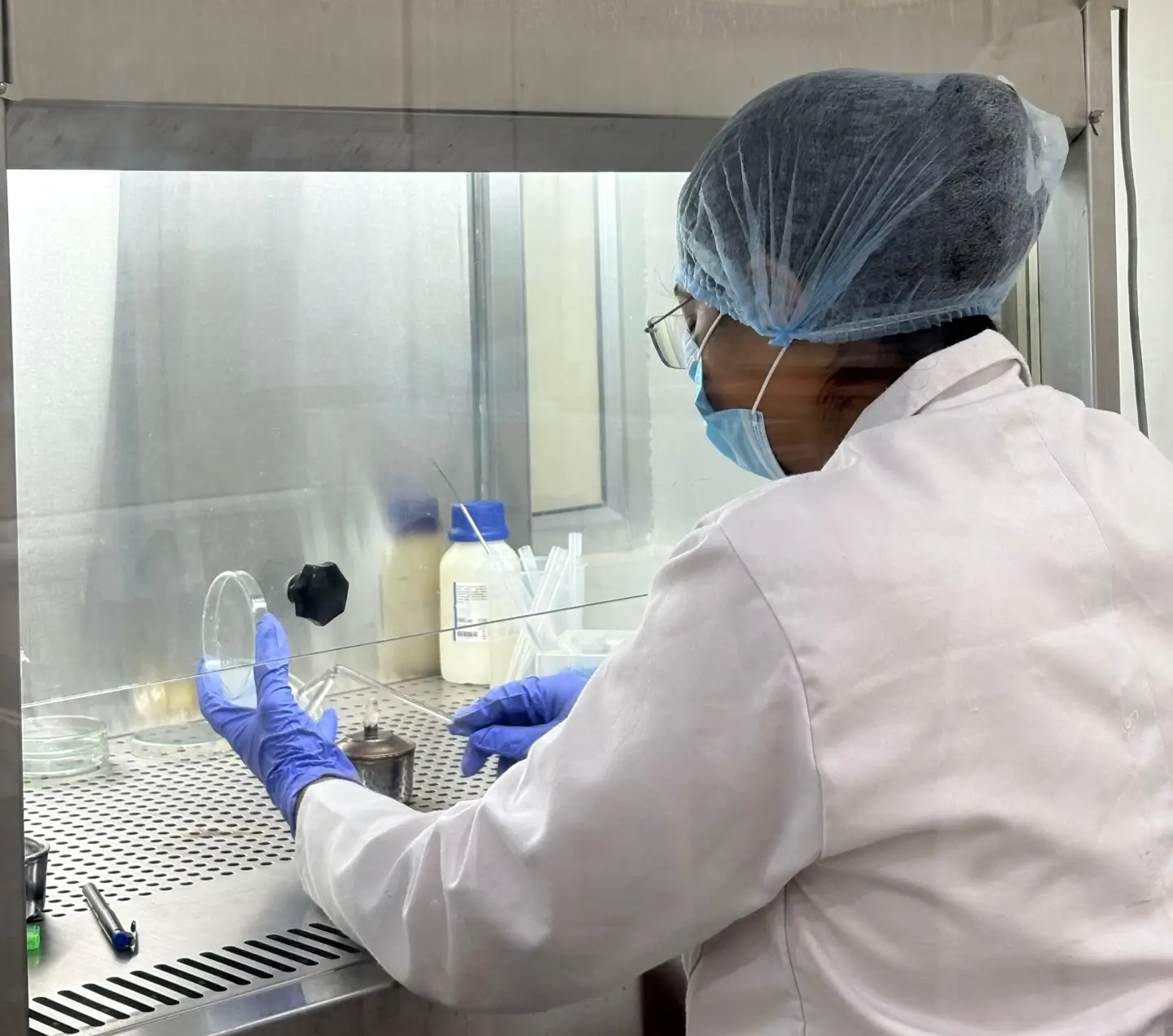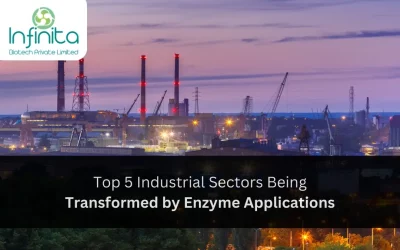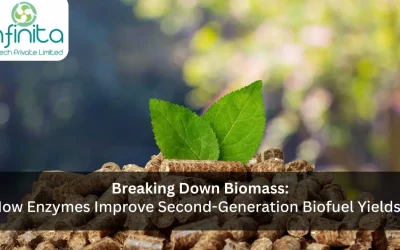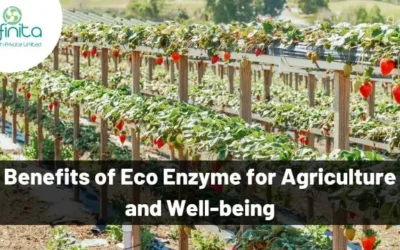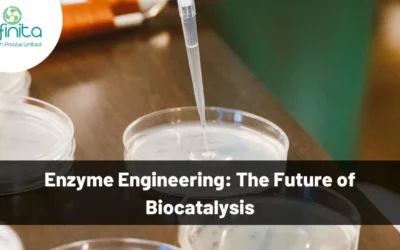A large style of microorganisms’ manufacture potent biocatalysts as enzymes that vary in their microbe sources, chemical properties, and mechanisms. Usually, microbial enzymes catalyse the reactions of hydrolysis, oxidation, or reduction. Microbial enzymes have completely different situation motifs targeting heterogeneous substrates. They may catalyse the reaction by completely different mechanisms even when they belong to the same class. Microbial enzymes are mainly produced by submerged fermentation and solid-state fermentation. The enormous diversity of microbe enzymes makes them a motivating cluster of product for application in several areas like agricultural, industry, food processing industry, textile industry, pharmaceuticals, wood process business, analytical applications, cosmetics, and environmental pollution control, such as bioremediation and biodegradation.
Enzymes From Microbial Sources
Enzymes are the bio-catalysts playing an important role in all stages of metabolism and biochemical reactions. Certain enzymes square measure of interest and square measure used as organic catalysts in varied processes on an industrial scale. Microbial enzymes square measure identified to be superior enzymes obtained from completely different microorganisms, significantly for applications in industries on industrial scales. Though the enzymes were discovered from microorganisms in the 20th century, studies on their isolation, characterisation of properties, production on bench-scale to pilot-scale and their application in bio-industry have continuously progressed, and also the information has often been updated. Many enzymes from microbial sources are already being used in various commercial processes. Selected microorganisms including bacteria, fungi and yeasts have been globally studied for the bio-synthesis of economically viable preparations of various enzymes for commercial applications.
In typical chemical change reactions victimisation biocatalysts, the best use of microbial enzymes, either in free or in immobilised forms, is dependent on the specificity of enzyme. In recent advances of biotechnology, according to the requirements of a process, various enzymes have been and are being designed or purposely engineered. Various established categories of enzymes square measure specific to perform specialised chemical change reactions and have established their uses in designated bio-processes. A large variety of latest enzymes are designed with the input of protein-engineering, biochemical-reaction engineering and metagenomics. Various molecular techniques have conjointly been applied to boost the standard and performance of microbe enzymes for his or her wider applications in several industries. As a result, several added-value product square measure being synthesised in world market with the utilisation of established bioprocess-technology using by design built biocatalyst-enzymes. There is use of microbial enzymes in different industries.
Most of the commercially applicable proteases square measure basic and square measure bio-synthesised in the main by bacterium like bacteria genus, Bacillus, and Clostridium, and some fungi are also reported to produce these enzymes. The xylanases with vital applications in bio-industries square measure made by the flora species happiness to genera Trichoderma, Penicillium and Aspergillus; the xylanases produced by these microorganisms have been found to possess high activity over a large vary of temperatures (40–60 °C).
Enzymes With Special Characteristics
Special characteristics of microbe enzymes embody their capability and considerable activity below abnormal conditions, mainly of temperature and pH. Hence, bound microbe enzymes square measure classified as thermophilic, acidophilic or alkalophilic. Microorganisms with systems of thermostable enzymes that may operate at more than traditional reaction temperatures would decrease the chance of microbe contamination in giant scale industrial reactions of prolonged durations. The quality of thermostability in enzymes promotes the breakdown and digestion of raw materials; conjointly the upper reaction temperature enhances the penetration of enzymes. The complete saccharification and reaction of polysaccharides containing agricultural residues needs an extended response time, which is often associated with the contamination risks over a period of time. Therefore, the hydrolytic enzymes are well sought after, being active at higher temperatures as well as retaining stability over a prolonged period of processing at a range of temperatures. The extreme temperature enzymes conjointly facilitate in enhancing the mass-transfer and reduction of the substrate consistence throughout the progress of reaction of substrates or raw materials in industrial processes. Thermophilic xylanase square measure thought of to be of economic interest in several industries significantly within the mashing method of production. The thermostable plant xerophytic isoforms of laccase enzyme are considered to be useful for their applications in textile, dyeing, pulping and bioremediation.
Enzymes With Special Characteristics In Biotechnology
Protease
Though the hydrolytic enzymes belong to the largest group of enzymes and are the most commercially-applicable enzymes, among the enzymes within this group the microbial proteases have been extensively studied. Proteases prepared from microbial systems are of three types: acidic, neutral and alkaline. Alkaline proteases are efficient under alkaline pH conditions and consist of a serine residue at their active site. Alkaline aminoalkanoic acid proteases have the biggest applications in bio-industry. Alkaline proteases are of particular interest being more suitable for a wide range of applications, since these possess high activity and stability in abnormal conditions of extreme physiological parameters. Alkaline proteases have shown their capability to figure below high pH, temperature and in presence of repressive compounds.
This bacterium named Bacillus RV. B2.90 was found to be capable of manufacturing associate degree catalyst preparation possessing special characteristics like being extremely alkalophilic, moderately halophilic, thermophilic, and exhibiting the quality of a thermostable protease enzyme. Alkaline proteases possess the property of a good stability in their catalyst activity once employed in detergents. The alcalescent enzyme made from Bacilli and proteases from alternative microorganisms have found a lot of applications overall in bio-industries such as: laundry powders, tannery, food-industry, animal skin process, pharmaceuticals, for studies in molecular biology and in peptide synthesis.
Keratinases
Keratin is associate degree insoluble and fibrous structural macromolecule that’s a constituent of feathers and wool. The protein is abundantly available as a by-product from keratinous wastes, representing a valuable source of proteins and amino acids that could be useful for animal feeds or as a source of nitrogen for plants. However, the keratin-containing substrates and materials have high mechanical stability and hence are difficult to be degraded by common proteases. Keratinases are specific proteolytic enzymes which are capable of degrading insoluble keratins. The importance of those enzymes is being more and more recognised in fields as numerous as animal feed production, textile process, detergent formulation, leather manufacture, and medicine. Proteolytic enzymes with specialised keratinase activity are needed to degrade keratins and for this purpose the keratinases are isolated and refined from sure bacterium, actinomycetes, and fungi.
Keratinases have been classified as serine- or metallo-proteases. Cloning and expression of keratinase genes in an exceedingly type of expression systems have conjointly been according. A higher operation temperature is needed within the degradation of materials like feathers and wool, which might be doable employing a thermostable keratinase. This aspect is of added advantage in achieving a higher reactivity due to lower diffusional restrictions and hence a higher reaction rate would be established. The enhanced stability of keratinase would increase the overall process yield due to the increased solubility of keratin and favourable equilibrium displacement in endothermic reactions.
Amylase
Amylase enzymes are significant enzymes for their specific use in the industrial starch conversion process. Amylolytic enzymes act on starch and connected oligo- and polysaccharides. The global research on starch hydrolysing enzymes based on the DNA sequence, structural analysis and catalytic mechanism has led to the concept of one enzyme family—the alpha amylase. The chemical process and connected enzymes are classified as organic compound hydrolases. The enzymes have been produced by a wide range of microorganisms and substrates and categorised as exo-, endo-, de-branching and Cyclodextrin producing enzyme. The application of these enzymes has been established in starch liquefaction, paper, food, sugar and pharmaceutical industries. In the food business chemical process enzymes have an oversized scale of applications, such as the production of glucose syrups, high fructose corn syrups, maltose syrup, reduction of viscosity of sugar syrups, reduction of turbidity to produce clarified fruit juice for longer shelf-life, solubilisation and saccharification of starch in the brewing industry. The baking industry uses amylases to delay the staling of bread and other baked products; the paper industry uses amylases for the reduction of starch viscosity to achieve the appropriate coating of paper. Amylase enzyme is used in the textile industry for warp sizing of textile fibres, and used as a digestive aid in the pharmaceutical industry.
Xylanase
Hemicellulose is one among main constituents of agricultural residues and plants together with polyose, lignin and pectin. Xylan is that the major part of hemicellulose consisting of β-1,4-linked D-xylopyranosyl residues. The chemical reaction of xylan in plant materials is achieved by the employment of a mix of hydrolytic enzymes together with endo-β-1,4-xylanase and β-D-xylosidase. The importance of xylanase has tremendously increased due to its biotechnological applications for pentose production, fruit-juice clarification, improving rumen digestion and the bioconversion of lignocellulosic agricultural residues to fuels and chemicals. Collins et al. have extensively studied the xylanase catalyst and its families similarly because the special xylanases possessing extremophilic characteristics. Xylanases have established their uses in the food, pulp, paper and textile industries, agri-industrial residues utilisation, and ethanol and animal feed production.
The enzyme used for the purpose of bio-bleaching of wood pulp should be active in the conditions of alkaline pH, high temperature and at the same time it is desirable that this catalyst is stable at high reaction temperatures. Xylanase preparations used for wood process within the paper business ought to be freed from polyose activity. Cellulase-free xylanase preparations have applications within the paper business to supply brightness to the paper because of their advantageous solubilisation of xylans in plant materials and selective removal of hemicelluloses from the kraft-pulp.
Laccase/Ligninase
Ligninolytic enzymes are applicable within the reaction of lignocellulosic agricultural residues, significantly for the degradation of the complicated and recalcitrant constituent polymer. This cluster of enzymes could be a mixture of synergistic enzymes, therefore they’re extremely versatile in nature and may be utilized in a variety of commercial processes. The complex enzyme system consists of three oxidative enzymes: lignin peroxidase (LiP), manganese peroxidase (MnP) and laccase. These enzymes have established their applications in bio-remediation, pollution control and in the treatment of industrial effluents containing recalcitrant and hazardous chemicals such as textile dyes, phenols and other xenobiotics.
The paper and pulp industry requires a step of separation and degradation of lignin from plant material, where the pre-treatment of wood pulp using Ligninolytic enzymes is important for a milder and cleaner strategy of polymer removal compared to chemical bleaching. Bleach improvement of mixed pulp has been achieved exploitation co-culture ways, through the combined activity of xylanase and laccase. The Ligninolytic enzyme system is used in bio-bleaching of craft pulp and in other industries such as for the stabilisation of wine and fruit juices, denim washing, the cosmetic industry and biosensors. Fungi are the most potent producers of lignin degrading enzymes. White rot fungi are specifically studied for the assembly of those enzymes. For the economical production of Ligninolytic enzymes, agricultural residues are used because the substrate in microorganism production of polymer degrading enzymes.
Cellulase
Cellulase enzymes are the third most important enzyme for industrial uses: world-wide research has been focused on the commercial potential of cellulolytic enzymes for the commercial production of glucose feedstock from the agricultural cellulosic materials. The significance of cellulose hydrolysing thermophilic enzymes in various industries includes the production of bio-ethanol and value-added organic compounds from renewable agricultural residues. Cellulose is that the thickest resource on the market globally for bioconversion into various merchandise in bio-industry on an advert scale. For economical bioconversion a method of economical saccharification exploitation cellulolytic enzymes is needed.
Cellulase is complex of three important enzymes which work synergistically owing to the crystalline and amorphous complex structure of cellulose. These enzymes, acting synergistically, hydrolyse cellulose to cello-biose, glucose and oligo-saccharides. Endoglucanase accelerator is that the initial one engaged on amorphous polysaccharide fibres, attacking the glucose-polymer chain randomly, which releases small fibres consisting of free-reducing and non-reducing ends. The free-ends of the chain are then exposed to the activity of exoglucanase accelerator, which produces cellobiose. The third part of cellulase is β-glucosidase, which hydrolyses the cellobiose, producing the glucose as the final product of cellulose sacharification.
Thermostability is a very important technical property for cellulases: since the saccharification of polysaccharide is quicker at higher temperatures, the stability of enzyme activity is necessary to be maintained for the completion of the process. Though the enzymes have been prepared using thermophilic microorganisms, these enzyme preparations are not necessarily heat-stable. The activity profile for the thermal activation and stability of cellulases derived from two Basidiomycetes cultures. The results proved that the previous heat-treatment of accelerator preparation caused activation of exo- and endo-glucanase activities, and improved the stability of enzymes over a period of reaction time. Therefore, the potency of cellulolytic enzymes is also increased by heat-treatment, by incubating buffered accelerator preparations while not polysaccharide or substrates before the saccharification method.
